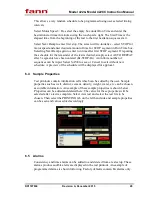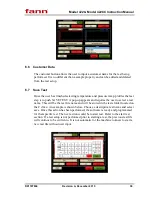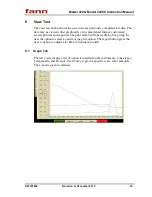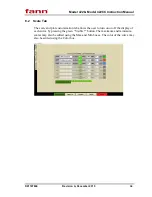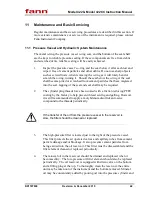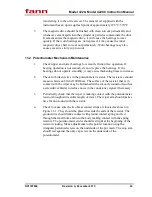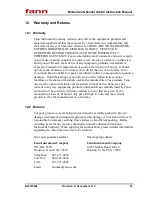
Model 422 & Model 422CC Instruction Manual
D01187869
Revision A, December 2015
43
transferring it to the oil reservoir. The mineral oil supplied with the
instrument has an open cup flash point of approximately 188 °C/370°F.
5.
The magnetic drive should be flushed with clean solvent periodically and
whenever cement spills into the cylinder or particles contaminate the drive.
If cement enters the magnetic drive, it will cause the bearings to wear
quickly. If the worn bearings are not replaced, it may cause the inner
magnetic drive shaft to wear out prematurely. Worn bearings may also
cause excessive slurry cup run-out.
11.2 Potentiometer Mechanism Maintenance
1.
Check upper and lower bearings for smooth, friction free operation. If
bearing operation is not smooth, clean or replace the bearings. If the
bearings do not operate smoothly, it may cause thickening times to increase.
2.
Check for broken wires in the potentiometer resistor. The resistance should
measure between 80 and 100 Ohms. The surface of the resistor that is in
contact with the wiper may be burnished with a smooth, round rod (such as
a screwdriver blade) to reduce noise in the consistency signal if necessary.
3.
Periodically check that the wiper is making contact with the potentiometer
resistor throughout its entire length of travel. The wiper arm should make a
nice friction sound with the resistor.
4.
Check to make sure the two brass contact strips are located as shown in
Figure 11-1. They should be placed towards the ends of the resistor. The
ground wire should make contact with ground contact spring and fed
through the small hole and into the body making contact with the spring
retainer. The potentiometer slider should rest right at the beginning of the
resistor winding. Make adjustments to the pointer location using the
triangular patterned screws on the underside of the pot mech. The stop arm
should rest against the only cap screw on the underside of the
potentiometer.

